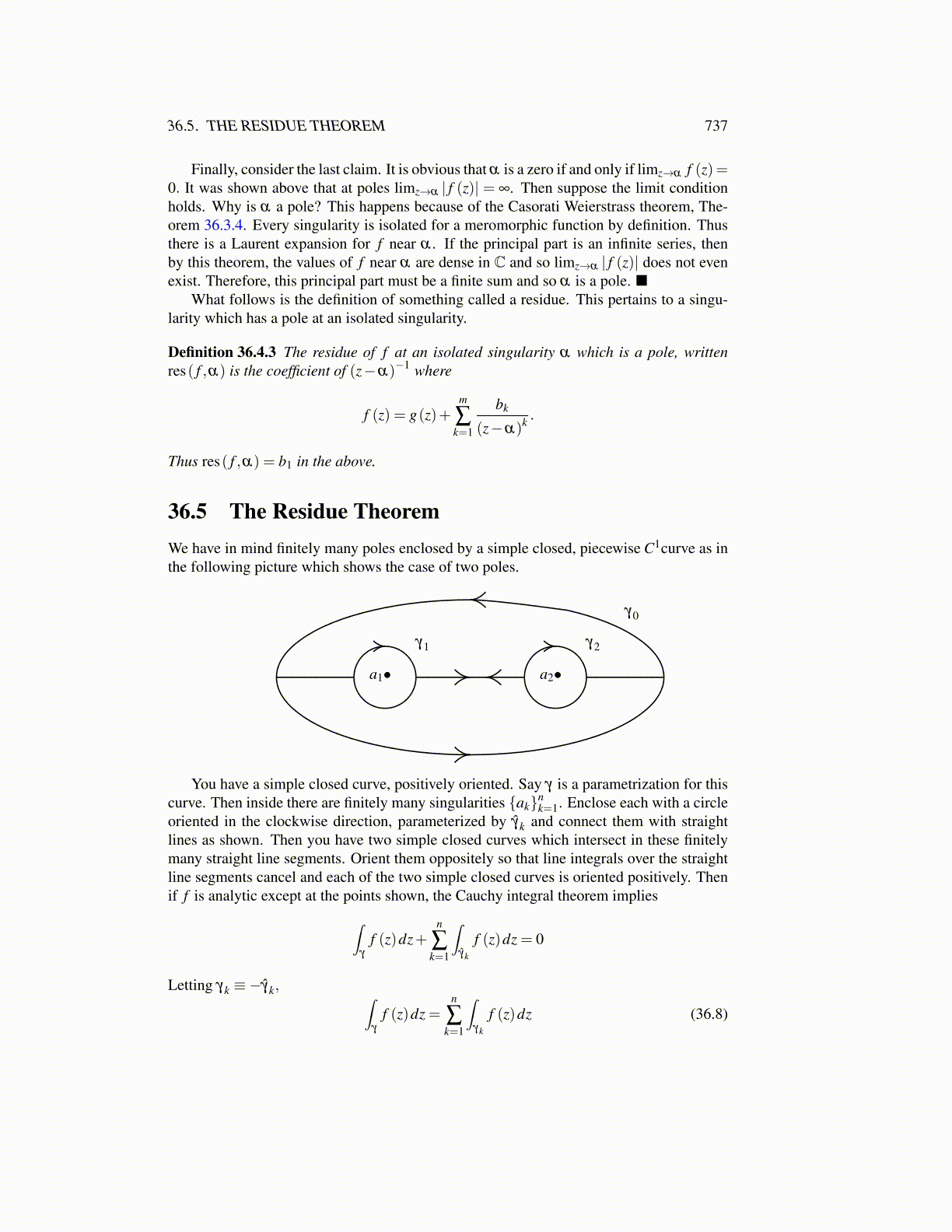
36.5. THE RESIDUE THEOREM 737
Finally, consider the last claim. It is obvious that α is a zero if and only if limz→α f (z)=0. It was shown above that at poles limz→α | f (z)| = ∞. Then suppose the limit conditionholds. Why is α a pole? This happens because of the Casorati Weierstrass theorem, The-orem 36.3.4. Every singularity is isolated for a meromorphic function by definition. Thusthere is a Laurent expansion for f near α . If the principal part is an infinite series, thenby this theorem, the values of f near α are dense in C and so limz→α | f (z)| does not evenexist. Therefore, this principal part must be a finite sum and so α is a pole. ■
What follows is the definition of something called a residue. This pertains to a singu-larity which has a pole at an isolated singularity.
Definition 36.4.3 The residue of f at an isolated singularity α which is a pole, writtenres( f ,α) is the coefficient of (z−α)−1 where
f (z) = g(z)+m
∑k=1
bk
(z−α)k .
Thus res( f ,α) = b1 in the above.
36.5 The Residue TheoremWe have in mind finitely many poles enclosed by a simple closed, piecewise C1curve as inthe following picture which shows the case of two poles.
•a1
γ1
•a2
γ2
γ0
You have a simple closed curve, positively oriented. Say γ is a parametrization for thiscurve. Then inside there are finitely many singularities {ak}n
k=1. Enclose each with a circleoriented in the clockwise direction, parameterized by γ̂k and connect them with straightlines as shown. Then you have two simple closed curves which intersect in these finitelymany straight line segments. Orient them oppositely so that line integrals over the straightline segments cancel and each of the two simple closed curves is oriented positively. Thenif f is analytic except at the points shown, the Cauchy integral theorem implies∫
γ
f (z)dz+n
∑k=1
∫γ̂k
f (z)dz = 0
Letting γk ≡−γ̂k, ∫γ
f (z)dz =n
∑k=1
∫γk
f (z)dz (36.8)